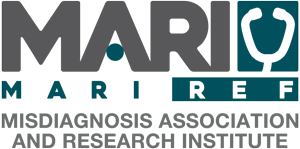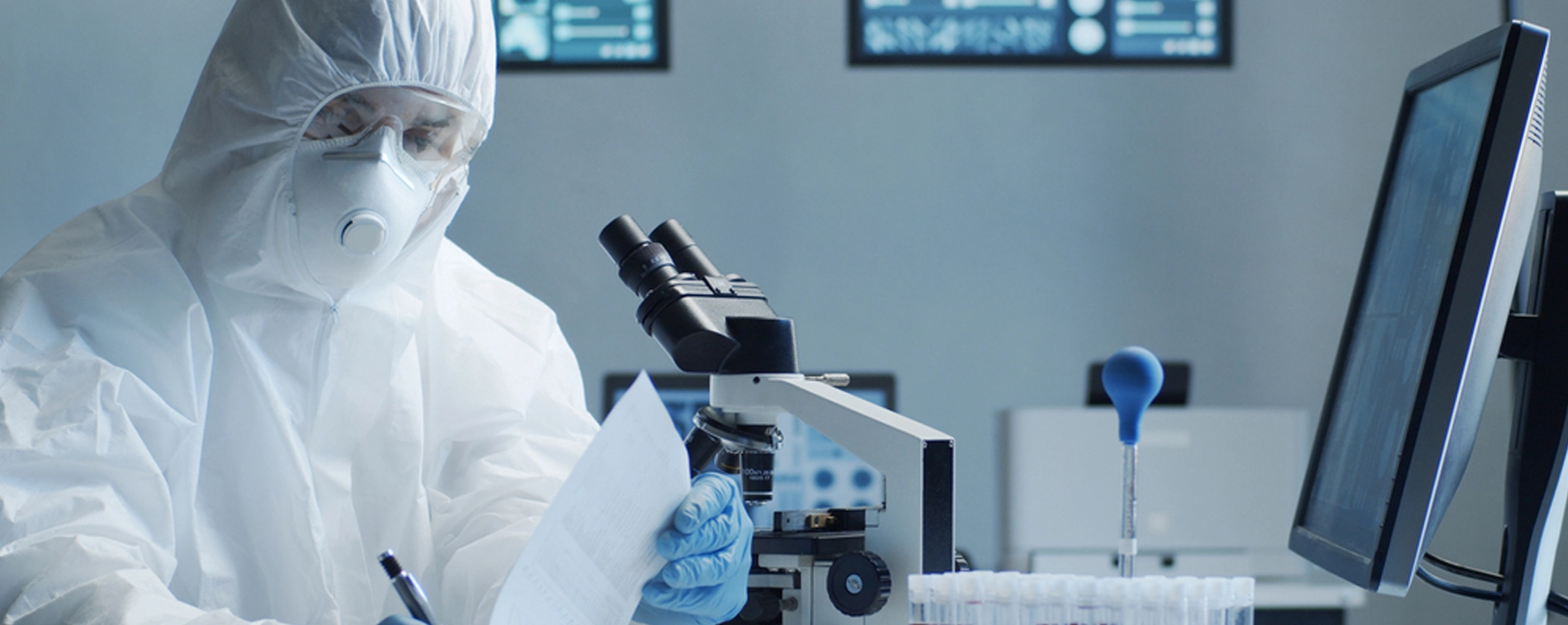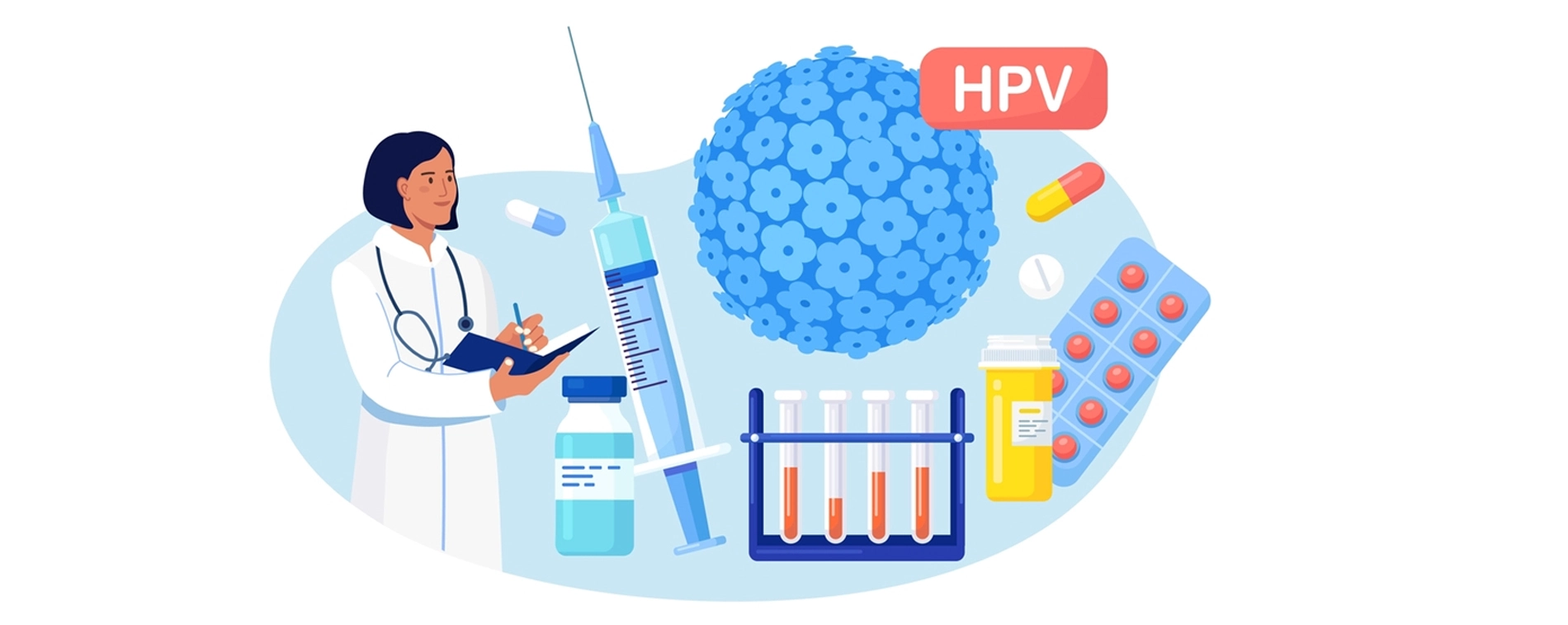Dr. Michael A Huchital, PhD Paul L McGehee CEO
Abstract
RAPID™ Screen Early Detection Field Assay is ideal for Point-of-Care (POC) and One Health Approach – decipher disrupt disease diffusion transmission.
Early and rapid-accurate detection, within 1 hour, is required for the burgeoning threat of infectious diseases Globally. Currently this type of technology does not exist. The major microbial pathogens are SARS-CoV-2 , Tuberculosis, Rabies, and Malaria.
Dyne Immune’s proprietary assay format provides Limits of Detection far beyond current assay formats: With LOD’s within the sub nanogram dynamic region; with standard curve Correlation Coefficients of 0.98-0.99. Dyne Immune’s LOD is 1-2 times greater re: order of magnitude, than the widely used RT-PCR. Tests for SARS-CoV-2, et al., and greatly improves upon the LOD of 3·106 copies·ml−1 for the SARS-CoV-2 Lateral Flow Assays; et al. Ergo: All infectious diseases (see appendix a).
In order to prevent endemics, epidemics, and pandemics, advanced automated and hand held facile, deployable, stable assays must be developed to prevent Global contagion: As early detection is the key for prevention (11).
How do we solve the Global Infectious Disease Challenge?
1) Advanced Technology (Anti-Pandemic ™ Platform)
2)Global Cooperation
3) Political Will
According to the Global Virome Project (GVP) a collaborative scientific initiative to discover unknown zoonotic viral threats and stop future pandemics. The estimated number of undiscovered animal viruses capable of transmission to people is over 500,000 viruses, viral dark matter currently circulating in wildlife. GVP was conceived in response to repeated and unpredictable emergence and re-emergence of high-impact viral epidemics and pandemics comprising Global Health security and well-being of people of the world.
Nearly 75 percent of new emerging human pathogens are zoonotic—meaning they made the “jump” from animals to humans. Ebola, HIV, zoonotic influenza, MERS-CoV, and most recently SARS-CoV-2 are the major examples.. The most serious disease threat is likely the one as yet unknown. Disease X,” a placeholder name adopted by the World Health Organization (WHO). We have no idea what Disease X can do, because we don’t know what Disease X is (1)
The world is confronted by increasing infectious disease outbreaks. Between 2011 and 2018, WHO tracked 1483 epidemic events in 172 countries. Epidemic-prone diseases such as influenza, severe acute respiratory syndrome (SARS), Middle East respiratory syndrome (MERS), Ebola, Zika, plague, yellow fever and others, are harbingers of a new era of high-impact, potentially fast-spreading outbreaks that are more frequently detected and increasingly difficult to manage (2).
As the World is challenged by the burgeoning threat of Infectious Diseases it is requisite to develop and provide the means by which these nefarious microbes are to be surveyed in communities and in wildlife globally, and prevented for present, imminent and future pandemics.
Dyne Immune has developed breakthrough technology to succinctly address the above triad, to be applied domestically and globally. Therefore, reducing Morbidity and Morality from Infectious Diseases, employed intentionally, or naturally occurring, by 90-96 %
For years prior to SARS-CoV-2 Dyne Immune has advocated: It is recognized that we live in an interconnected world where a single lethal microbe could emerge suddenly and rapidly spread to every house in every Community without regard to National Borders or to Social and economic standing.
We are equally aware that’s a global trends indicate that over the course of this century the rate that new microbial threats emerge will continue to accelerate due to growing social economic and demographic factors largely driven by the world’s increasing population and increasing interactions with animal populations. We will assist Member States International Health Regulations 2005 compliance regarding surveillance detection via RAPID™ Screen.
The ability to mitigate disease emergence is undermined by poor understanding of the diversity and ecology of viral threats Dyne Immune’s platform will bring new understanding.
Solving the Global infectious Disease Problem
For far too long, we’ve veered between panic and neglect in responding to the risks presented by infectious diseases, with business leaders, for the most part, bewildered bystanders. With the risks increasing, we cannot afford to continue like this.
For individual businesses, developing a better understanding of infectious disease risks and how they can be managed has clear financial benefits. For policy-makers, the better that businesses manage such risks, the more resilient the overall economy will be. Moreover, when business leaders are more aware of what’s at stake, maybe there will be a different dialogue about global health – from being a topic that rarely touches the radar screen of business leaders to being a subject worthy of attention, investment and advocacy (3).
The public should be protected by its government (10), be provided safety, equality improved quality of life for its people, avoidance of disease, shut downs. Major industries should protect business and workers (3)
Why do Neglected Tropical Diseases (NTDs) still exist? Because they generally afflict the world’s poor and historically have not received as much attention as other diseases. NTDs cause substantial illness for more than 1.7 billion people globally.
NTDs are debilitating maladies that disproportionately impact people in Low-Middle-Income-Countries (LMICs). NTDs are called “neglected,” because they generally afflict the world’s poor and historically have not received as much attention as other diseases. Zoonotic diseases pose an imminent threat to mankind. Many NTDs are ancient afflictions that have plagued humankind for centuries and, as a consequence, have had a huge impact on ancient and modern history. (4)
The Covid-19 pandemic has seen one new billionaire emerging every 30 hours, while nearly one million people could be pushed into extreme poverty every 33 hours this year. Millions of people are facing “impossible rises” in the cost of simply staying alive.(5)
Many of the world’s poorest nations are in Africa. Numerous African economies are unstable, poverty is widespread, and poor access to adequate healthcare. Despite these challenges, Africa’s 54 countries include some of the fastest-growing economies in the world. The African economy is expected to reach a GDP of $29 trillion by 2050, powered by its agriculture, trade, and natural resources sectors. The region has an eager and expanding workforce, with 20 million new job seekers a year in sub-Saharan Africa alone. Africa may be the least developed of the major continents—even the richest African countries lag far behind the wealthiest countries in the world—but its potential is both substantial and undeniable (8)
Solving the Global infectious Disease Problem
As of June 2022 there are more than 500 million cases and 6 million deaths of SARS-CoV-2 globally. The leading country is the USA with over 83 million cases and 1 million deaths. While this disaster should have brought the world together, instead we are divided, fragmented, and living in worlds apart. We should not be surprised that this has happened. But we still should grieve and be angry, because these millions of deaths are neither normal nor acceptable. Sadly, there is scarce evidence that we are learning the right lessons from this pandemic. Thousands continue to die every day, yet many talk and act as if the Thousands continue to die every day, yet many talk and act as if the pandemic is over. Already, attention is starting to wander. Solutions are being discussed, but ambition is waning. Progress is slowed by geopolitical divisions, and negotiations are taking place behind closed doors without those they will affect the most. We are once again moving from panic to apathy and neglect. If we do not change course–even with the results of our failings staring us squarely in the face–we will have squandered a rare and fleeting opportunity to implement the transformative changes needed (6).
Advanced Technology Solving the Global Infectious Disease Challenge:
The Dyne Immune Institute has developed a platform for the immediate accurate identification of Global Infectious Diseases.
Dyne Immune’s technology is designed to rapidly detect, within 1 hour, a plethora of infectious diseases that occur Globally; whether naturally or intentionally disseminated. ERGO: Viral, Bacterial, Fungal, Protozoa.
Dyne Immune’s RAPID™ Screening is based upon immuno-physico-chemical analysis. Applying those existing scientifically validated proofs, Dyne Immune has adapted these proofs to Rapid-automated RAPID-analysis.
Dyne Immune’s RAPID™ analysis for infectious diseases is simple to apply, as no sample preparation is required, as PCR requires sample preparation. Samples for analysis are rendered from Human, Zoonotic and Environmental samples. Samples are then easily placed within a pre-prepared disc that contains the accurate reagents; pre-prepared, for immediate analysis within a clinic, MD’s office, Public health facility, and Hospitals (POC).
You might like to read about the Misdiagnosis Association MARI Research Institution
Dyne Immune’s RAPID™ assay format is accurate via purified-specific antibodies provide Limits of Detection far beyond current assay formats: With LOD’s within the sub nanogram dynamic region; with standard curve Correlation Coefficients of 0.98-0.99. Dyne Immune’s LOD is 1-2 times greater re: order of magnitude, than the widely used RT-PCR. Tests for SARS-CoV-2, et al., and greatly improves upon the LOD of 3·106 copies·ml−1 for the SARS-CoV-2 Lateral Flow Assays; et al. Ergo: All infectious diseases.
The persistence of the global pandemic caused by SARS-CoV-2 virus has continued to emphasize the need for point-of-care (POC) diagnostic tests for viral diagnosis. The most widely used tests, lateral flow assays used in rapid antigen tests, and reverse-transcriptase real-time polymerase chain reaction( RT-PCR), have been instrumental in mitigating the impact of new waves of the pandemic, but fail to provide both sensitive and rapid readout to patients.
RAPID™ Screen microbead agglutination assay, with a functional capture molecule, typically an antibody, and mixing these microbeads with the test sample. In the presence of the target biomolecule or pathogen, beads will bind together, aggregating and resulting in bead precipitation from suspension. In conventional agglutination assays, agglutination is seen qualitatively, not quantitatively, and typically requires the target to be cultured or amplified in some way to get enough agglutination to be visible. Agglutination assays are commonly used in food safety applications, as well as in the diagnosis of infectious diseases, and, barring the need for complex analyte amplification techniques, can be used in POC settings (7).
The Solution to the Global Infectious Disease Problem
Most clinical decisions use some type of diagnostic device. The laboratory network is very useful however it requires massive infrastructure data collection and highly skilled personnel. Laboratory networks employ different quality standards which can result in varying degrees of error .The laboratory testing instruments are expensive and can take days to complete. Many diseases present in a similar way and therefore, arduous to diagnose. Clinicians often times need to make decision promptly in order to apply the appropriate intervention. A delay in the appropriate treatment could cause progression of the disease past the point of treatment. SARS-CoV-2 exposed many gaps and vulnerabilities in global health. We learned the best way to curb SARS-CoV-2 pandemic was to bring testing as close as possible to the patients.
Disease control, elimination, eradication or extinction requires situational awareness, the early detection of contagion before symptoms, mildly symptomatic or asymptomatic, consequently, early disease detection of the infected infectious and susceptible. Rapid testing for transmission prevention in communities represses individual spreading diseases. Point-of-care, onsite diagnostics are important public health instruments particularly in resource-constrained countries. The need for enhanced multiplexed detection capabilities exist especially LMIC. Traditionally, diagnostic capabilities were specific to the pathogen, time-consuming, and costly. Single-pathogen diagnostics require clinical suspicion and are not readily available, or available at all, for some pathogens
Fixing the Global Infectious Disease Challenge
The following is what will help this current COVID19 pandemic and future pandemics: 1) Advanced Technology 2) Global Cooperation 3) Political Will
Support scientists, researchers and small business innovators of all genders, races, ethnicities, and backgrounds; fight the Inertia of the status quo
*Establishment of a universal standard metric, so that cross comparison between infectious disease assays (test) can readily be made in the public domain(9).
*Appropriate and increased use of Prototyping via biotechnology
The Solution to the Global Infectious Disease Challenge
The solution requires strong:
1) Advanced Technology (Anti-Pandemic ™Platform)
2) Global Cooperation
3) Political Will
With enhanced health wellness, WHO goals for healthy people global business will be better protected. For global business, growing markets with sustainability certainly its better to profit from good health and wellness oppose to pain, suffering and encumbered global markets Therefore we have a choice the status quo continues with threat of stagnation and shut down or we grow global markets maybe the current folks stuck in the inertia of status quo will get a little less however growing markets will be substantially more than what they are currently are receiving.
Solid global public health sector via WHO IHR2005 (10) without ostracizing for reporting public health outbreaks, globally agreed system to address Viral Sovereignty (12). Civil Society can have more influence on outcomes via advocacy. Corporations via strong management can enhance sustainability via aggressive social responsibility (2,3). Trillions of Global business growth via reduction elimination of NTDs and billions of lives saved and or impacted. Thus offsetting inequality that kills, contributing to the death of at least one person every four seconds profiting from pain (5) Increase availability of good options via advanced technology redundancy. The need exist for more engagement directly with innovative transformative biotechnology and use of viable 100 day pandemic platforms to combat pandemics. It will require political will to make the moves necessary. Advanced enlighten or progressive civil society and good governments will most likely be the spark to ignite a real change for pandemic avoidance
Reference:
(1) What Happens After Disease X: Using One Health to Prevent the Next Pandemic
(2) Global Preparedness Monitoring Board. A world at risk: annual report on global preparedness for health emergencies. Geneva: World Health Organization; 2019.
(3) World Economic Forum “Outbreak Readiness and Business Impact Protecting Lives and Livelihoods across the Global Economy” Peter Sands, Research Fellow, Harvard Global Health Institute
(4) Neglected Tropical Diseases and Pandemic Prevention With Peter Hotez
(5) Profiting from pain Covid-19 Pandemic Created One new Billionaire every 30 hours Oxfam Report
(6) Worlds Apart to a World Prepared: Global Preparedness Monitoring Board report2021. Forward Geneva: World Health Organization
(7) Point-of-care SARS-CoV-2 sensing using lens-free imaging and a deep learning-assisted quantitative agglutination assay†
(8) Top 20 richest countries in Africa (9) The Limit of Detection Matters: The Case for Benchmarking Severe Acute Respiratory Syndrome Coronavirus 2 Testing
(10) International Health Regulations (11) A National Blueprint for Biodefense Leadership and Reform Needed To Optimize Efforts Bipartisan Commission on Biodefense
(12) Who Owns a Deadly Virus? Viral Sovereignty, Global Health Emergencies, and the Matrix of the International
Appendix A:
PROPRIETARY RAPID™ SCREEN FORMAT:
1) Accurate: for detection of whole live pathogenic organism. Not molecular RT-PCR DNA-RNA lab based analysis. Not Lateral Flow Assay.
2) No Sample Preparation
3) High Volumes Testing, with Limits of Detection 3-4 orders of magnitude beyond current methods.
4) Rapid
5) Onsite at Point-of-Care.
6) Results within 1 hour.
7) Simple to use.
8) Applications: Human samples: Zoonotic Samples: Environmental and Agricultural samples.
9) Pre-Prepared reagent discs. Automated validated instrumentation & hand-held assays.
(10) Analysis for all pathogenic microbes Viral, Bacterial, Fungal and Protozoal.
End Notes
The Men who foresaw the COVID-19 Pandemic coming: What you need to know. Dyne Immune Institute 2020
New Rabies RAPID™ Screen Test Expected to Transform Testing and Treatment Dyne Immune Institute 2019
Detection Dyne Immune’s RAPID™ Screen Surveillance System
Microshere Immuno Aggultination (MIA™) WHO Dyne Immune Institute 2019
Intermittent Shedding of Rabies Virus in Saliva WHO
Dyne Immune Institute 2019
Report of an Evaluation of a Dyne Immune Rabies Rapid Screen Test Kit for Detection of Rabies Virus Rabies Program Poxvirus and Rabies Branch CDC and Center for Veterinary Biologics-Policy, Evaluation, and Licensing USDA 2008
Yersinia pestis assay CDC
Dr. Huchital Dyne Immune Institute


